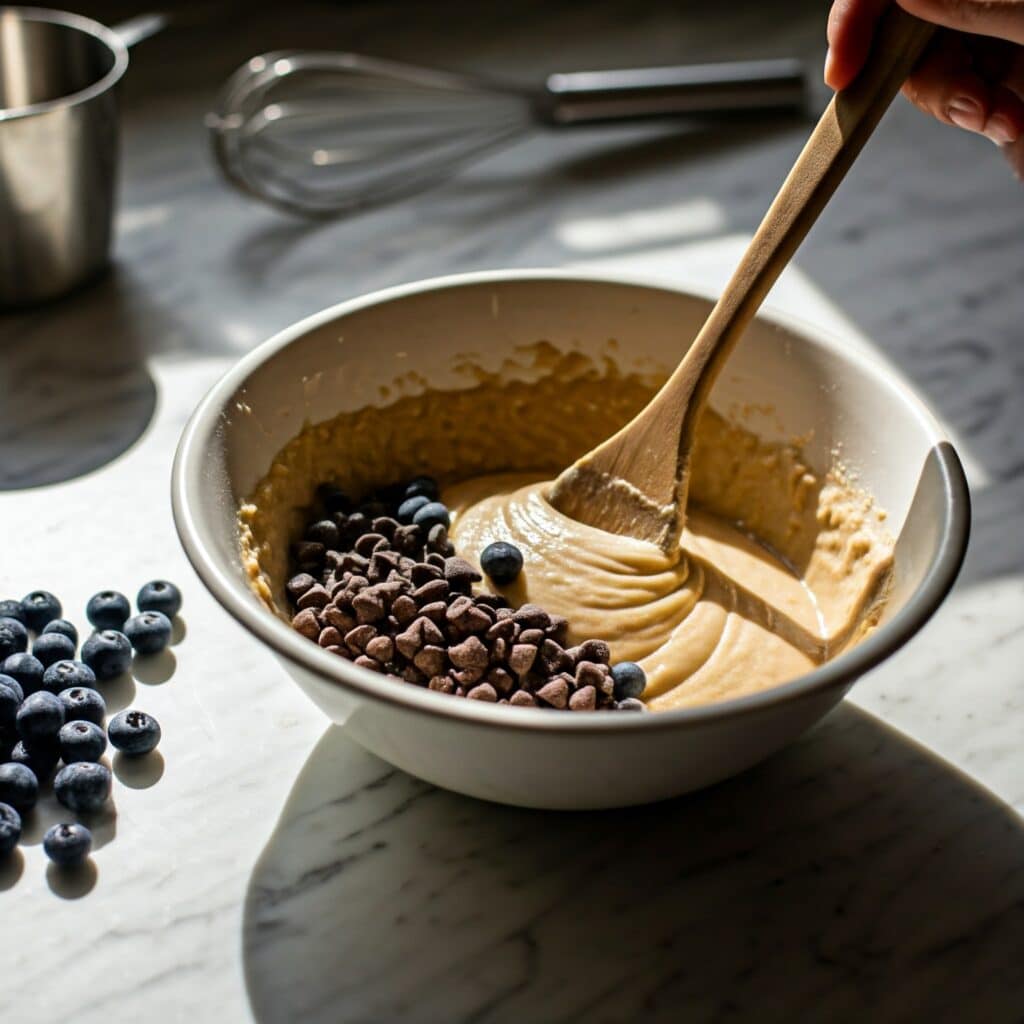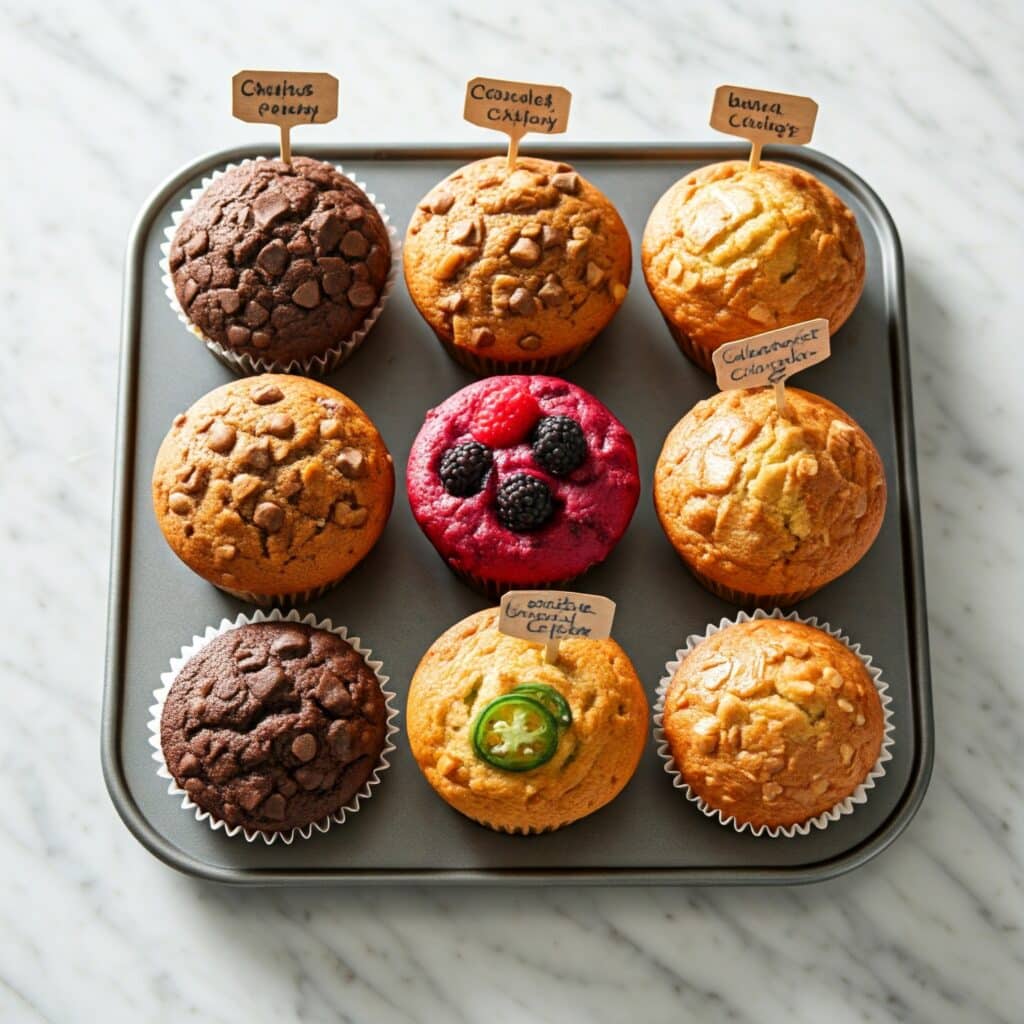There’s something magical about muffins, isn’t there? From their irresistible aroma wafting through the kitchen to their perfect balance of sweetness and texture, muffins are a timeless favorite. But here’s the kicker—making muffins doesn’t have to mean measuring flour, sifting dry ingredients, or worrying about the right proportions. That’s where muffin mix steps in to save the day.
Whether you’re a seasoned baker looking to save time or someone who wants foolproof results, muffin mix is your ticket to quick, delicious treats. In this article, we’ll dive deep into everything you need to know about muffin mix—from what it is and how it works to creative ways to use it and tips for enhancing your muffins. Ready to become a muffin mix master? Let’s get started!
What Is Muffin Mix?
Definition and Convenience
Muffin mix is a pre-measured blend of dry ingredients designed to simplify baking. It typically includes all the basics—flour, sugar, baking powder, and sometimes powdered flavorings or dried fruits. All you need to do is add wet ingredients like eggs, milk, or oil, mix it up, and bake. Easy, right?
The convenience of muffin mix is what makes it a staple in many kitchens. You skip the hassle of measuring out individual ingredients while still enjoying freshly baked muffins. Plus, muffin mix is versatile. You can whip up a batch for breakfast, pack them for lunchboxes, or serve them as a sweet treat for guests.
Types of Muffin Mix
There’s a muffin mix for everyone! Standard options include classic flavors like blueberry, chocolate chip, and banana nut. But the market has evolved to include:
- Gluten-Free Mixes: Perfect for those avoiding gluten.
- Keto-Friendly Mixes: Lower in carbs, often using almond or coconut flour.
- High-Protein Mixes: Packed with extra nutrients for a healthy snack.
No matter your dietary preferences, there’s a muffin mix to suit your taste buds and lifestyle.
Key Ingredients in Muffin Mixes
Core Ingredients
At its core, muffin mix simplifies baking by providing a pre-blended base of essential ingredients. These key components work together to create moist, fluffy muffins every time:
- All-Purpose Flour: 2–3 cups, providing the structure and base of the muffins. Gluten in the flour helps hold everything together.
- Sugar: ½–¾ cup, depending on the mix. Adds sweetness and helps the muffins achieve a golden brown color.
- Baking Powder or Baking Soda: 1–2 teaspoons, acting as a leavening agent to make the muffins rise.
- Salt: ¼–½ teaspoon, enhancing the flavors of the other ingredients.
- Dry Milk Powder (optional): Adds richness and depth to the mix.
Specialty Additives
To cater to different diets and preferences, many muffin mixes include specialty ingredients that enhance texture and flavor:
- Almond Flour or Coconut Flour: Common in gluten-free and keto-friendly mixes, offering a unique nuttiness.
- Dried Blueberries, Chocolate Chips, or Nuts: Pre-mixed add-ins save time and add bursts of flavor.
- Protein Powder: Found in high-protein mixes, perfect for a healthy boost.
- Sweeteners: Natural alternatives like stevia or erythritol in sugar-free options.
Understanding these ingredients helps you choose the best muffin mix for your needs—and maybe even inspires you to experiment with your own blends.
How to Use Muffin Mix Like a Pro
Mixing and Measuring
Getting the most out of your muffin mix starts with following the instructions, but there are a few tricks to ensure success:
- Measure Wet Ingredients Carefully: Use a measuring cup for liquids like milk or oil. Adding too much can make muffins dense, while too little may leave them dry.
- Preheat Your Oven: Always start with a hot oven, usually around 375°F (190°C), for consistent baking.
- Don’t Overmix: Stir just until the ingredients are combined. Overmixing can lead to tough, chewy muffins.

Enhancing Your Muffins
Why settle for plain muffins when you can elevate your muffin mix with creative add-ins? Try these ideas:
- Fresh Fruit: Toss in a handful of chopped apples, raspberries, or bananas.
- Nuts and Seeds: Add crunch with pecans, walnuts, or sunflower seeds.
- Spices: A teaspoon of cinnamon, nutmeg, or vanilla extract can bring extra warmth and flavor.
- Toppings: Sprinkle coarse sugar, streusel, or even shredded coconut on top before baking.
Avoiding Common Mistakes
Even with a foolproof muffin mix, things can go wrong if you’re not careful. Here are common mistakes to avoid:
- Overfilling the Muffin Tin: Leave a little room for the batter to rise; two-thirds full is ideal.
- Skipping the Liner or Grease: Muffins that stick to the pan can ruin your baking experience—use cupcake liners or grease your pan well.
- Baking Unevenly: Rotate your muffin tin halfway through baking to ensure even cooking.
Master these steps, and your muffins will turn out golden, fluffy, and absolutely delicious every time!
For more breakfast creative recipes to inspire your next meal, check out Gipfeli Recipe on Workshop Recipes.
Popular Brands of Muffin Mix
Top-Selling Options
Muffin mix brands are as varied as the flavors they offer. Some brands have earned a reputation for their consistent quality and delicious results, making them household staples. Here are a few top contenders:
- Betty Crocker: Known for its wild blueberry mix, this brand delivers muffins with a light, fluffy texture and authentic blueberry flavor.
- Duncan Hines: Offers an impressive lineup, including their popular “Simple Mornings” mix with no high fructose corn syrup or preservatives.
- Krusteaz: A favorite for its wild blueberry muffin mix, which includes canned blueberries for a fresh burst of flavor.
Specialty Brands
If you’re looking for something unique, specialty muffin mixes cater to various dietary needs and flavor preferences:
- Kodiak Cakes: High-protein mixes perfect for fitness enthusiasts.
- Lakanto: Sugar-free options made with almond and oat flour for those watching their carb intake.
- Jiffy Mix: A budget-friendly classic with simple ingredients and great taste.
When choosing a muffin mix, consider your flavor preferences, dietary needs, and how much effort you want to put into the preparation. With so many great brands available, there’s something for everyone.
Creative Variations with Muffin Mix
Sweet Muffin Ideas
Muffin mix is incredibly versatile, and sweet variations are the most popular. Try these ideas to make your muffins stand out:
- Double Chocolate Delight: Add ½ cup of chocolate chips and 1 tablespoon of cocoa powder to a chocolate muffin mix for extra indulgence.
- Berry Explosion: Mix in a handful of fresh or frozen raspberries and strawberries for a burst of fruit flavor.
- Cinnamon Crumble: Top muffins with a streusel made from butter, brown sugar, and oats before baking.
Savory Muffin Options
Who says muffin mix is only for sweet treats? Turn it into savory delights with these ideas:
- Cheddar and Jalapeño: Add ½ cup of shredded cheddar cheese and a few slices of fresh jalapeño to a cornbread muffin mix.
- Herb and Cheese: Mix in 1 teaspoon of dried rosemary and ¼ cup of grated Parmesan for a fragrant twist.
- Bacon and Chive: Toss in cooked bacon bits and chopped chives for a savory breakfast muffin.

Using Muffin Mix Beyond Muffins
Think outside the muffin tin! Transform muffin mix into other baked goods:
- Pancakes or Waffles: Add extra milk to thin out the batter for a quick breakfast.
- Coffee Cake: Layer the batter with cinnamon sugar for a moist, flavorful coffee cake.
- Muffin Cookies: Drop spoonfuls of batter onto a baking sheet for a soft, cookie-like treat.
With these creative variations, your muffin mix will never feel boring or limited again.
The Science Behind Muffin Mix
How Ingredients Interact
Ever wondered how muffin mix turns into fluffy, golden muffins? It all comes down to science! The ingredients in the mix interact in specific ways to create the perfect texture and taste:
- Leavening Agents: Baking powder or baking soda releases carbon dioxide when combined with liquid and heat, causing the batter to rise. This gives muffins their soft, airy texture.
- Flour and Gluten: Flour provides structure. When mixed with liquid, gluten forms, creating the framework that holds everything together. But don’t overmix—too much gluten can make muffins tough!
- Sugar: Sugar does more than add sweetness. It helps with browning, retains moisture, and contributes to a tender crumb.
Why Fresh Ingredients Matter
While muffin mix includes most dry ingredients, the wet add-ins you choose (like eggs, milk, and oil) can make or break your muffins. Fresh eggs and high-quality milk or oil create a richer, more flavorful result. Additionally, using real butter instead of margarine can enhance the taste and add a buttery aroma to your muffins.
Understanding these interactions helps you get the most out of your muffin mix, ensuring consistent, bakery-quality results every time.
FAQs About Muffin Mix
Can Muffin Mix Be Used for Other Recipes?
Absolutely! While muffin mix is designed for muffins, it’s incredibly versatile. You can use it to make pancakes, waffles, or even loaf cakes. Simply adjust the liquid ratios as needed, and get creative with add-ins like fruit, chocolate, or nuts.
How Long Does Muffin Mix Last?
Most muffin mixes have a shelf life of 6–12 months when stored in a cool, dry place. However, always check the expiration date on the box. If the mix contains real fruit or nuts, it may expire sooner. For long-term storage, consider keeping it in an airtight container to prevent moisture and pests.
What Are the Healthiest Muffin Mixes?
Healthier muffin mix options are widely available now. Look for mixes labeled as gluten-free, keto-friendly, or high-protein. Some brands also use natural sweeteners like stevia or erythritol, making them a great choice for those watching their sugar intake. Adding fresh fruit or using alternative oils like coconut oil can make your muffins even more wholesome.
By understanding these common questions, you’ll feel more confident using your muffin mix in fun, creative ways while maximizing its shelf life and health benefits.
Muffin Mix for Dietary Restrictions
Gluten-Free Options
For those who need to avoid gluten, there are plenty of fantastic muffin mix choices available. These mixes use alternatives to wheat flour, such as almond flour, rice flour, or tapioca starch. They’re specially formulated to maintain a soft, moist texture despite the lack of gluten. Popular brands like Krusteaz and King Arthur offer gluten-free versions that taste just as good as the originals.
To get the best results, make sure to follow the package instructions carefully. Gluten-free batters can behave differently, so avoiding overmixing is especially important. Add-ins like blueberries or chocolate chips can also help enhance the flavor and texture of gluten-free muffins.
Keto and Low-Carb Muffins
If you’re following a low-carb diet, keto-friendly muffin mixes are a game-changer. These mixes often use almond or coconut flour, combined with natural sweeteners like stevia or monk fruit, to keep the carbohydrate count low. Brands like Lakanto and Miss Jones offer delicious keto options that are easy to prepare.
To boost the flavor of keto muffins, consider adding cinnamon, vanilla extract, or even sugar-free chocolate chips. These small tweaks can make your muffins taste indulgent while keeping them diet-friendly.
Vegan Muffin Mix Tips
Vegan baking is easier than ever, thanks to versatile muffin mix options. Substitute eggs with flaxseed (1 tablespoon flaxseed + 3 tablespoons water = 1 egg), and use almond milk or oat milk instead of regular milk. Coconut oil or vegan butter works beautifully as a replacement for traditional butter, ensuring your muffins turn out moist and flavorful.
Tips for Storing and Reheating Muffins
Proper Storage Techniques
To keep your muffins fresh and delicious, proper storage is essential. Once your muffins are completely cool, place them in an airtight container or a resealable plastic bag. At room temperature, muffins stay fresh for about 2–3 days. For longer storage, refrigerate them; they’ll last up to a week in the fridge.
If you’ve made a large batch, consider freezing your muffins. Wrap each muffin individually in plastic wrap and store them in a freezer-safe bag or container. Frozen muffins can be stored for up to 3 months, making them a convenient grab-and-go snack.
Reheating for Optimal Texture
When it’s time to enjoy your muffins, reheating them properly makes all the difference. Here are two methods:
- Oven Method: Preheat your oven to 350°F (175°C). Wrap the muffins in foil to keep them from drying out and heat for 5–7 minutes.
- Microwave Method: Place a muffin on a microwave-safe plate and cover it with a damp paper towel. Heat on medium power for 15–20 seconds.
Both methods restore the muffins’ soft, fluffy texture and enhance their flavors, ensuring your muffin mix creations taste just as good as when they were fresh out of the oven.

Discover the Joy of Baking with Muffin Mix
With its convenience, versatility, and delicious results, muffin mix is a baking essential for both beginners and pros. Whether you’re whipping up a quick breakfast, experimenting with creative flavors, or accommodating dietary needs, there’s no limit to what you can create. Plus, with tips for proper storage and reheating, your muffins will always taste fresh and flavorful.
Ready to try something new? Learn more about how to measure ingredients accurately for perfect results every time from Taste of Home. Discover fun add-ins for baked goods at AllRecipes, and explore ideas for using leftover batter at The Spruce Eats.
From gluten-free to savory muffins, your muffin mix creations will surely impress friends, family, and even yourself. So grab your favorite mix, get creative, and let the baking begin!

